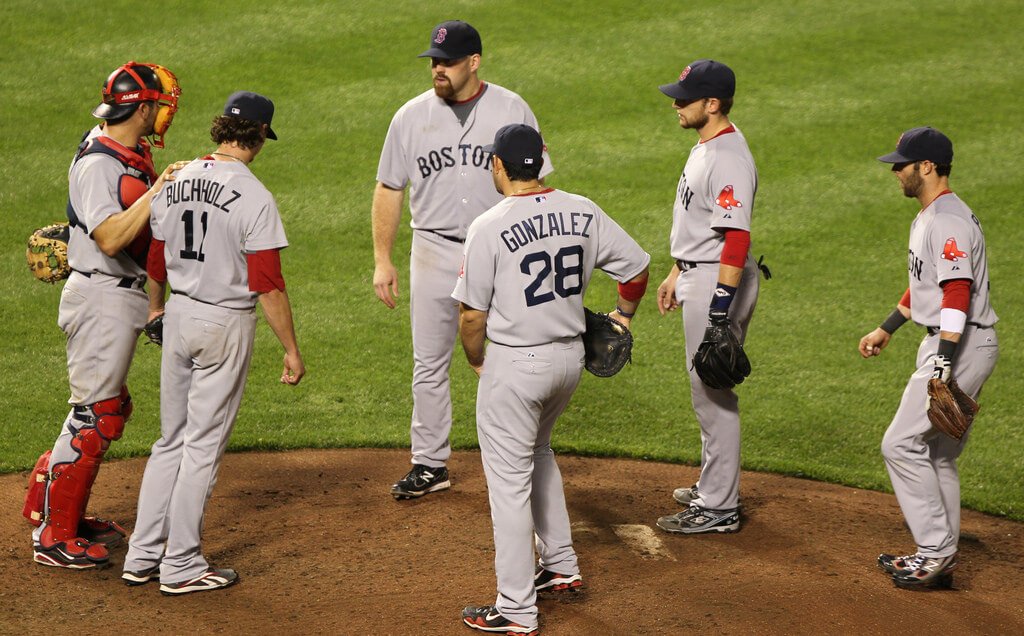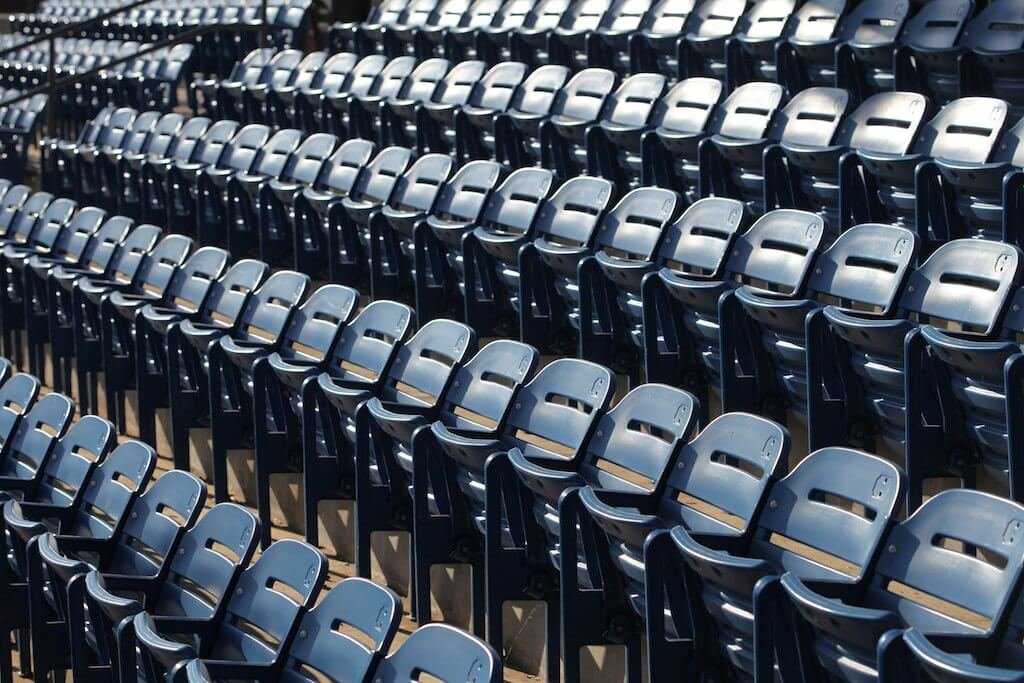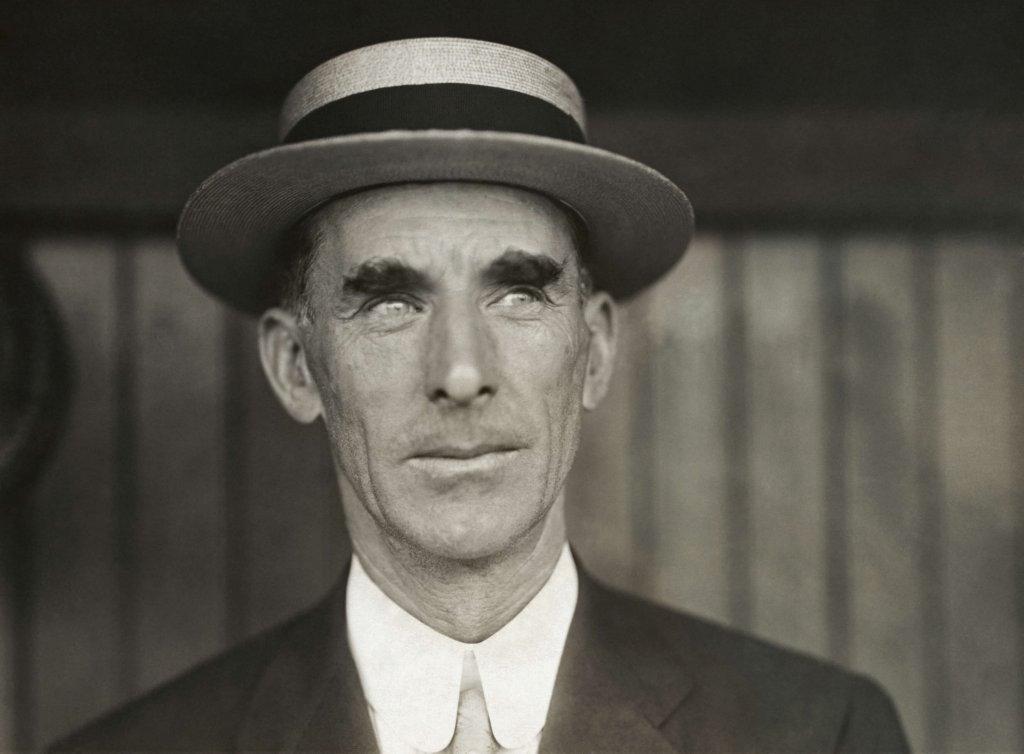How to Fix Major League Baseball

- Interest in baseball is declining due to the game’s inability to evolve.
- Can pace of play measure help revive America’s national pastime?
- Can baseball find ways of connecting with a new generation of fans?
Baseball is broken. I know it, you know it, and 91% of Americans know it. That became evident in January when a mere nine-percent of respondents identified baseball as their favorite spectator sport in a national Gallup poll. That’s the lowest percentage for the sport since the consulting company first asked the question way back in 1937. Baseball’s waning popularity has also been reflected lately in the game’s plummeting television ratings and its declining attendance figures, which hit a 17-year-low in 2017.
The good news (yes, there is a little bit of that) is that baseball can still be saved. We’ve come up with 11 sure fire ways to get America’s national pastime back on its feet.
1. Adopt a Pitch Clock
The MLB Players Association is adamantly opposed to 20-second pitch clocks, and that’s shame, because they really do work. Pitch clocks have been employed in Double and Triple-A since 2014 and have increased the pace of play in those leagues by a full ten minutes. They do not lead to sloppier games or more injuries, as some players originally feared, and the clocks themselves blend in almost seamlessly with the many billboards and advertisements in center field. It’s “time” for the Majors to gets on board and adopt this simple and highly effective technology.
Baseball’s Dwindling Attendance Figures
| Year | Attendance |
|---|---|
| 2017 | 72.67 |
| 2016 | 73.16 |
| 2015 | 73.76 |
| 2014 | 73.74 |
| 2013 | 74.03 |
| 2012 | 74.86 |
| 2011 | 73.45 |
| 2010 | 73.2 |
| 2009 | 73.6 |
| 2008 | 79 |
| 2007 | 79.6 |
2. Allow Electronic Strike Zones
Anyone who has seen a televised baseball game over the last five years knows that every Major League ballpark is equipped with cameras which track the speed and trajectory of every pitch. It’s an integral part of every broadcast, and it’s accurate 100-percent of the time. You would think Major League Baseball would want to adopt the technology to help improve the game, but Commissioner Rob Manfred has remained steadfast in his refusal to employ so-called “robot umpires.”
We appreciate Rob Manfred’s reluctance to part with tradition, but it’s possible to have the best of both worlds by combining electronic technology with human umps.
We appreciate Manfred’s reluctance to part with tradition, but it’s possible to have the best of both worlds by combining electronic technology with human umps. Back in 2016, former Major Leaguer Eric Byrnes participated in a fascinating experiment when he umpired a minor-league game between the San Rafael Pacifics and the Pittsburg Diamonds. Rather than using his eyes to call balls and strikes, the animated player-turned-broadcaster relied on the computer data delivered to him via an earpiece from the stadium’s PITCHf/x software program. Fans got to enjoy Byrne’s antics, while players got to enjoy the fact that every call was 100-percent correct. It was a win-win situation.
Some will argue that the technology still has its flaws, but the league already uses electronic technology to test and grade human umpires, so they clearly have confidence in its accuracy.

3. Limit the Number of Pitching Changes
The final three innings should be the most exciting part of a baseball game, but far too often they’re a total snooze fest because of the parade of specialists brought in from the bullpen. Major League Baseball needs to reverse this trend by making relievers pitch to at least three batters per appearance. The rule would boost offense, generate more excitement and dramatically cut down on delays by reducing trips to the mound. Fans go to baseball games to watch pitcher-batter showdowns, not to see portly managers waddle from the dugout to the mound three times an inning.
4. Lobby Congress to make Opening Day a National Holiday
If baseball really is America’s national pastime, as many still believe, then why not honor it properly by turning Opening Day into a national holiday? This baller move would help boost attendance figures and would remind citizens from sea to shining sea just how special the game truly is.
5. Contract Two Teams
Major League Baseball has been flirting with the possibility of expansion lately, but if the league and its owners really value the game they should consider contraction instead. By eliminating two teams and dispersing the best players, the MLB could drastically strengthen its on-field product and would be able to schedule more games between teams that fans actually want to see.
Two candidates to consider are the Rays and the A’s. Tampa Bay had the worst attendance figures in baseball in 2017 and is badly in need of a new stadium. The franchise is interested in relocating to nearby Ybor City, but will need to raise at least $150 million of its own funds to contribute to a new ballpark.
The A’s find themselves in a remarkably similar situation. Oakland attracted just 18,446 fans per game in 2017 and are no closer to finding a new stadium of their own after losing out on a prime new location in December. The Raiders already have one foot out the door and it wouldn’t be shocking to see the A’s follow suit if they’re unable to get their act together.

6. Shorten the Season
One of the things that makes the NFL so special is the brevity of its season. Each team plays only 16 games and every single one of them matters. That’s simply not the case in baseball, where a team can sleepwalk through an entire month of the season and still manage to sneak into the playoffs.
One way of injecting a little more urgency into the sport is to return to baseball’s pre-1960 schedule when teams played 154 games.
One way of injecting a little more urgency into the sport is to return to baseball’s pre-1960 schedule when teams played 154 games. A shorter season would allow the World Series to wrap up long before November, and would make stretch drives shorter and considerably more dramatic. If 154 games were good enough for Ty Cobb and Babe Ruth then they’re certainly good enough for Brock Holt and Hunter Renfroe.
7. Cut Down On Delays
Major League Baseball announced last week that teams will be limited to six mound visits per game. It’s a good start, but it doesn’t go far enough. If baseball is serious about shortening games it must limit the number of times a batter or pitcher can call for “time”, and reduce the number of pointless pickoff attempts per baserunner. While we’re at it, let’s also cut down on the amount of body armour worn by hitters. Come on, it’s baseball, not jousting. Ditch the pads and get back in the box!
Length of Baseball Games Since 2007
| Year | Time |
|---|---|
| 2017 | 3:05 |
| 2016 | 3:00 |
| 2015 | 2:56 |
| 2014 | 3:02 |
| 2013 | 2:58 |
| 2012 | 2:55 |
| 2011 | 2:51 |
| 2010 | 2:50 |
| 2009 | 2:51 |
| 2008 | 2:50 |
| 2007 | 2:51 |
8. Adopt the Same Rules for Both Leagues
The American League ushered in a new era in 1973 with the introduction of the designated hitter. The DH added instant intrigue to the game and became so popular that it was adopted within ten years by virtually every college, minor, and professional league around the world. Just about everyone has adopted the rule except for the National League, where knobby-kneed pitchers are still forced to undergo the indignity of striking out four times a game.
You would think over time that pitchers would eventually become better hitters, but the opposite appears to be true. Pitchers achieved a new low in 2014 when they hit just .122 and accounted for an out 86.2 percent of the time they came to the plate. That’s a trend that isn’t about to change anytime soon unless baseball comes to its senses and brings the designated hitter rule to the NL. Adopting Rule 5.11, as it’s officially known, will add offense and excitement, and will allow pitchers to focus on doing what they do best.

9. Allow Managers to Wear Suits
Imagine if Gregg Popovich was forced to wear a pair of nut huggers for all Spurs games, or if Pete Carroll had to don pads and a helmet every time the Seahawks took the field. It’s ridiculous (and slightly nauseating) to consider, and yet Major League Baseball thinks nothing of making sexagenarians like Buck Showalter and Ron Gardenhire wear ill-fitting uniforms designed for men one-third their age. The tradition harkens back to baseball’s early days when managers were also players and had to be ready to enter the game at a moment’s notice, but the MLB hasn’t had an active player-manager since 1986 when Pete Rose appeared in 72 games as a reserve infielder for the Reds. It’s time for managers to ditch the uniforms and go back to the distinguished suit and tie look favored by legends like Connie Mack. Bonus points if they rock a straw boater.
10. Expand Stadium Menu Options
Major League Baseball’s resistance to change is evident everywhere, including at the concession stands, where the menus are dominated by hot dogs, peanuts, nachos, and Cracker Jack. That’s fine if you only go to the ballpark once a year, but not if you’re a season ticket holder who craves a little diversity in your diet. Fortunately, the problem can be easily fixed by setting up a kiosk in every stadium that sells iconic items from the visiting team’s city or state.
Imagine digging into a bowl of New England Clam Chowder when the Red Sox come to town, or noshing on some tasty crab cakes when the Orioles visit. It would be a true home run for fans hungry for variety.
11. Bring Back Bullpen Carts
We’ll be the first to admit that bullpen carts may not actually speed up games, but they would definitely make them more fun. We dare you not to smile when you watch a grown man driven 230 feet in a baseball-shaped golf cart. It’s the kind of pointless fun that baseball needs more of.


